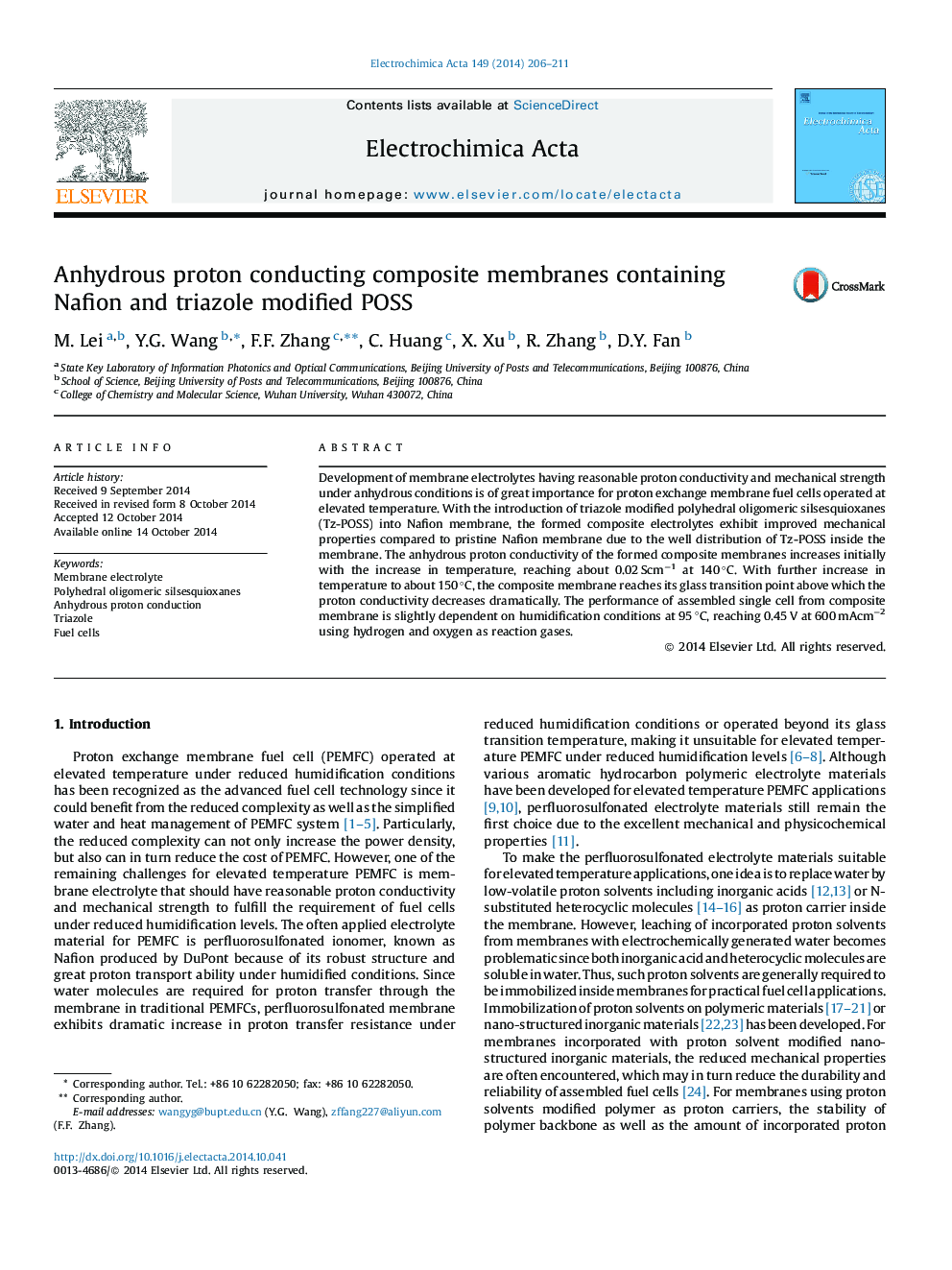| Article ID | Journal | Published Year | Pages | File Type |
|---|---|---|---|---|
| 184953 | Electrochimica Acta | 2014 | 6 Pages |
Development of membrane electrolytes having reasonable proton conductivity and mechanical strength under anhydrous conditions is of great importance for proton exchange membrane fuel cells operated at elevated temperature. With the introduction of triazole modified polyhedral oligomeric silsesquioxanes (Tz-POSS) into Nafion membrane, the formed composite electrolytes exhibit improved mechanical properties compared to pristine Nafion membrane due to the well distribution of Tz-POSS inside the membrane. The anhydrous proton conductivity of the formed composite membranes increases initially with the increase in temperature, reaching about 0.02 Scm−1 at 140 °C. With further increase in temperature to about 150 °C, the composite membrane reaches its glass transition point above which the proton conductivity decreases dramatically. The performance of assembled single cell from composite membrane is slightly dependent on humidification conditions at 95 °C, reaching 0.45 V at 600 mAcm−2 using hydrogen and oxygen as reaction gases.
Graphical abstractFigure optionsDownload full-size imageDownload as PowerPoint slide
